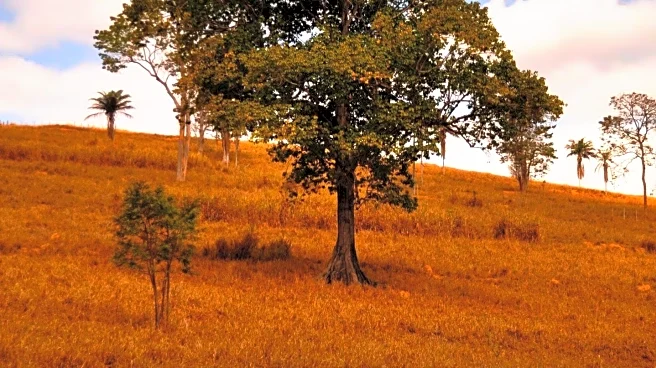What's Happening?
Geese migration patterns are being affected by climate change, according to Jacques Bourgeois from the Oak Hammock Marsh Wetland Discovery Centre. Geese rely on sunlight to trigger migration, experiencing
'zugunruhe' or migratory restlessness as daylight decreases. This year, dry conditions have led to mixed migration results, with some geese migrating earlier than usual. Different populations have varied schedules, with those nesting in northern regions starting earlier due to longer travel distances.
Why It's Important?
The shift in geese migration patterns due to climate change highlights the broader impact of environmental changes on wildlife. As temperatures fluctuate and food sources become scarce, animals must adapt their behaviors, which can affect ecosystems and biodiversity. Understanding these changes is crucial for conservation efforts and for predicting future impacts on wildlife. The reliance on natural landmarks for navigation also emphasizes the importance of preserving natural habitats.
Beyond the Headlines
The changes in migration patterns could have long-term effects on geese populations and their habitats. Conservationists may need to adjust strategies to accommodate these shifts, ensuring the protection of migratory routes and feeding grounds. The phenomenon also serves as a reminder of the interconnectedness of climate change and wildlife behavior, prompting further research and policy discussions on environmental conservation.












